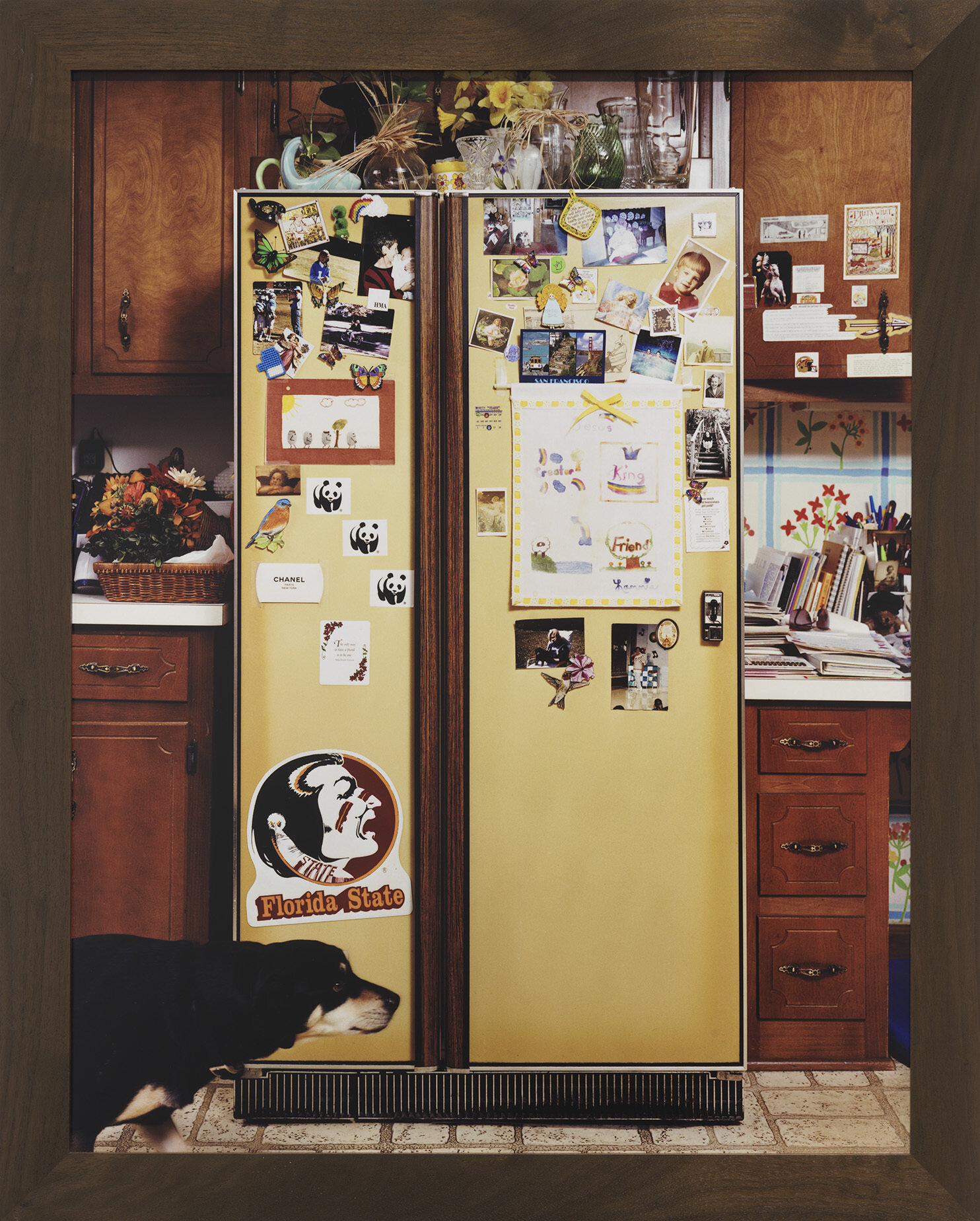Exhibition Review: Roe Ethridge's "Old Fruit"
By Charlotte Kent
Roe Ethridge’s technical proficiency is perfectly displayed in the current exhibit at Gagosian. Twenty years of his work, with an emphasis on the period from 2000-2003, offer a lens into one of the influences for an aesthetic that is now pervasive. Given his influence on a younger generation of photographers, seeing these early works during this age of incessant imagery is a reminder of an earlier moment when the mundane was still unusual and how it can be engaging.
Andrew WK (2000) is a classic now but also an ideal lesson in catch lights. The 30x24 inch dye sublimation onto aluminum glistens, but it worked equally well as an album cover for the musician’s 2001 album, I Get Wet. The musician’s stringy hair and his bloody nose pouring down his chin suggest a post-show blowout, appropriate for a heavy metal rock star. Ethridge’s photograph, however, works so well because of a subtle subversion in light reflection. Typically, catch lights allow eyes to gleam, to show a spark of life. In this photograph, the catch light is a dull dash in the upper eye that contrasts with the sharp sheen of the singer’s lower lip. Whether intentional or not, the image works because of this shift in visual expectations.
ROE ETHRIDGE, Old Fruit, 2010, Dye sublimation print on aluminum, 50 x 40 in 127 x 101.6 cm © Roe Ethridge. Courtesy Gagosian.
William Eggleston’s work had been described as “perfectly banal” and “perfectly boring” by the New York Times when it was first shown, which seems perfectly apt for Ethridge’s Refrigerator (1999) except that, like Eggleston, the eye remains rapt within the frame of the picture by the composition. The narrow freezer door on the left of the yellow stand-up refrigerator decenters a perfectly centered object. On each side, wooden cabinets match the refrigerator door. The counter tops are lined with notebooks, cookbooks, a basket of fake flowers, in a scene that everyone of a certain age remembers from someone’s home, if not their own. This is his parent’s kitchen in an image shot for an unpublished editorial assignment. The stickers, photos, papers, magnets on the refrigerator tell a story of a family that the viewer might attempt to examine, except that the ordinariness of the scene suggests it is unnecessary, that it would be an over wrought analysis. Suddenly, one sees the dog in the lower left corner entering the scene, headed off to the right with purpose, and the eye start roving around again, looking for more in what ought to be a completely irrelevant snapshot.
ROE ETHRIDGE, Refrigerator, 1999, Dye sublimation print on aluminum
30 x 24 in 76.2 x 61 cm © Roe Ethridge. Courtesy Gagosian.
Andrew WK, 2000, ROE ETHRIDGE, Dye sublimation print on aluminum,
30 x 24 in 76.2 x 61 cm © Roe Ethridge. Courtesy Gagosian.
Something similar happens with The Pink Bow (2001-2002), which is a large photograph of one of those department store bows. There is nothing to see in this quintessential wrapping, but the wrinkles in the bow reflect light in an inconsistent pattern that is oddly mesmerizing. These exemplify why some dismiss Ethridge’s work, pointing to a lack of content or meaning. Instead, what a viewer experiences in looking at these images is what a camera allows.
Ethridge’s pigeons or moon shots reveal a capacity to manage movement and duration. Anyone who has ever tried to take either kind of image will recognize the work involved. Old Fruit (2010) is a humorous still life, akin to his Apple and Cigarettes. These are classic still-lives made gross, made contemporary. Old Fruit presents a bowl of rotting fruit on top of a wooden barrel with a background of wood paneling. The bananas are speckled. The peach fuzz is starting to accumulate mold while the strawberries are furry monstrosities. Post the global financial crisis, it is a perfect image of decadence; in our current health pandemic, it is a perfect image to spark awareness of our past waste. The most recent work, Grapes at Jimmy Marrow’s (2019), offers a cluster of grapes but what for? It’s in the looking that one begins to see.










